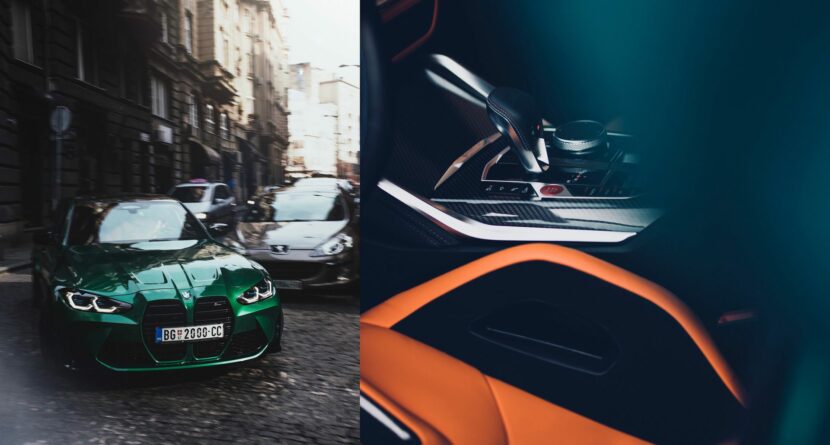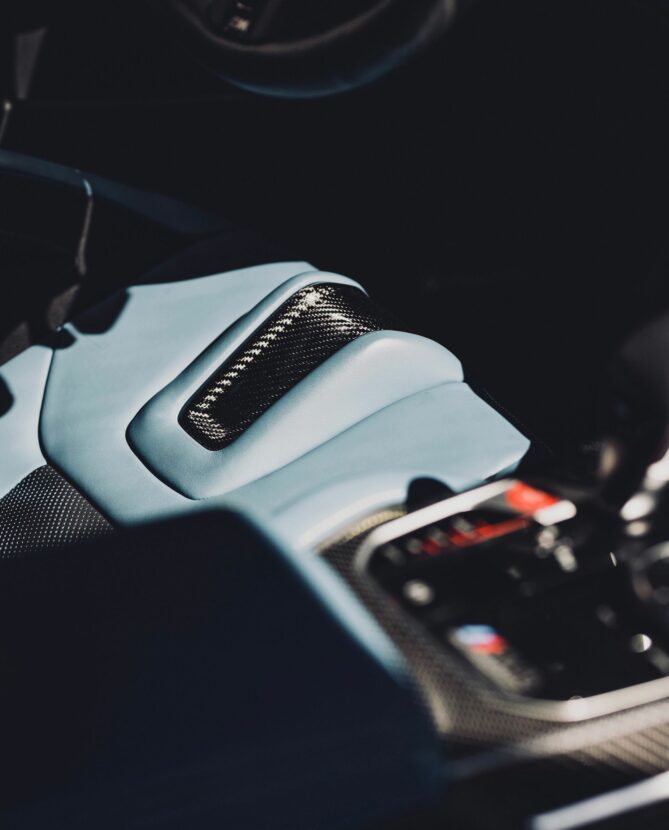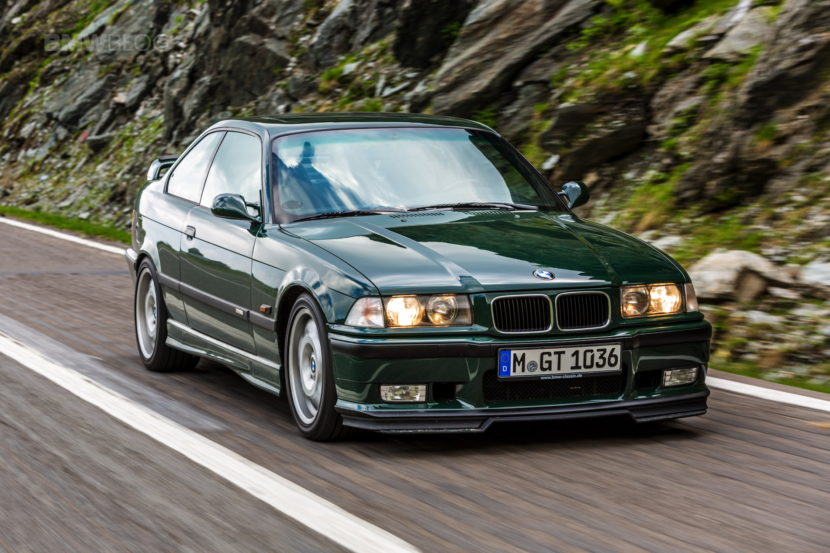Can’t actually remember when was the last time a new BMW M3 has caused such a bipolar public reaction. Oh wait, I can… Never. As far as I remember, the year 2020 was the first time ever that news about the next generation of M3 stroke automotive audience with such a sharply polarized opinion. There were no grey zone when first pictures were released, just a black and white, love or hate kind of relationship.
There were two things that caused such chaos in an automotive world. Firstly, the obvious one: The G80 has one of the most intriguing and questionable design languages in the world of sport sedans, period. Secondly, there’s a weight increase attached to it for a car with such history and pedigree. Since the new M3 is more powerful and BMW kept power to weight ratio about the same as with the F80, what’s the fuss then?
The M3 Story – Born In Motorsport

Mostly because when it comes to an M cars, it’s never been about sheer power. The story of the BMW M3 started in the demanding and unforgiving world of motorsport. So that means that the company needed a car that could compete in DTM meeting the FIA’s Group A regulations. But you could not simply just produce a one-off car for racing purposes. To meet the FIA’s homologation requirements, BMW needed to make 5,000 road going versions of the competition car. This lead to development of the E30 M3, the first M3 car and the start of a legend.
Today, vast majority of manufacturers make their cars faster by simply adding more power. It’s just easier. For the cars derived from motorsport departments, it’s the other way around: you have to play with the weight, physics, geometry, and more. It’s tough but that’s what makes these cars the best driver cars.
So since I have always admired BMW for were being able to create a vehicle that with every generation is maybe less powerful than its competitors, but lighter and nimbler. Thus faster on the track. My main concern since day one was that weight specification more so than controversial design. Early M vehicles always had a lightweight DNA. So, after 35 years, the expectation bar was really high. But when someone tells me that new G80 M3 weighs 1730kg , the first thing that came to mind – it’s gotta be an error. But it wasn’t. So will the M3 lose the title of one of the best driving sports cars of all time?
Heaviest M3 Ever Made

My first impression: likely not. The weight is a matter of physics and while we can’t do nothing about its existence in absolute terms, the amazing thing is that I actually couldn’t feel that number in real life. The level of engineering that has been put into the chassis stiffening process makes these numbers almost irrelevant. Truth to be told, I do need track some experience in order feel the geometry and suspension in more extreme conditions.
It’s not only the increase in power that compensates for additional weight, it’s the chassis, suspension and brakes. Remember the motorsport derived road cars? Well in 2020, the M3 did it again. It’s always easier to bump the horsepower figures and destroy the competition, but it is whole another form of art to achieve the same result the other way around. So how did the new M3 ensure exceptional body stiffness, increased torsional rigidity and perfect 50:50 weight distribution? In the same manner as the E3: by developing it together with the racing car.
This time with the new M4 GT3 endurance race car. To make the long story short, the longitudinal and torsional stiffness are now at new levels due to the specifically designed bracing elements. Also, based on the undercarriage reinforcement alone, it looks to me that G80 must be even more rigid than the F80. Not to mention added struts in the engine bay, raised front axle grip to reduce understeer, extremely high camber and camber stiffness. Quite impressive work to be honest, but that’s what I expected and will always expect from BMW M.
Translating these tech elements into real life driving

In the simplest terms – the car is tight. Not harsh, but tight and kinda tense. The overall grip and body control are exceptional. The front grip is insane, thanks to the camber settings out of the factory, and wider front tires compared to the previous model, and a wider front track. At first, I thought the car provided for a test drive was a 4WD version, but after the rear snapped a little, even with the DSC ON, it was clear what I’m messing with. Reducing the level of 10-stage Traction Control just a 2 steps lower allows a tad of a slip angle. Furthermore, certain moments felt very progressive, while others a bit snappy. However any lower setting should be experimented at the track and when one is more familiar with the overall car driving characteristics.
Naturally, some drivers could characterize the “snappy” behavior as a flaw, but I personally appreciate those small quirks of naughty character that reminds you of a vehicle that can bite you anytime. Sure it’s great to know that we arrived at a point where most of track usable cars are completely normal in traffic. But in recent years most of these went too far, sacrificing emotion for comfort. I still truly appreciate every bit of that character that is left in any car as a reminiscence to older times.
Another thing that accompanies this feeling very well is the new S58 engine. Even seconds after ignition, you can feel that you are in different car, and not in a regular 3 Series. This a serious unit: 3.0 liter twin-turbo straight-six petrol engine, with plenty of power. There is a presence of synthetic, weird, deep “burble” at the bottom part of rev range, but once you pass 4,000 rpm, higher pitched note reveals a marvelous turbo sound.
It’s not the loudness of the sound that catches the attention, but that sharp note above 3-4,000 rpm that reminds me of old BMW inline-six engines. With all this being said and the fact that naturally aspirated engines are near their extinction and the turbos being the new normal, I must say, in an M3, that new normal doesn’t felt bad at all.
As I’m approaching the redline, it’s time to change the gear and keep that prolonged feeling for some time. I hit the right shifter paddle expecting the immediate reaction, small kick and boom! Nothing happens… I mean the gear change happens, but with zero drama which leaves me a bit disappointed. It’s not like this is a major flaw, or a flaw at all, but it is the moment that disconnects the driver from thrilling experience created from powertrain and suspension combined.
8-Speed Auto or DCT?

BMW says that ZF is able to change gears in less than 150ms, which seems to be undetectable by human brain, but I felt the presence of a short lag. Both in upshifts and the downshifts. Switching to Sport Plus makes things a bit better, but still not up to a DCT level. ZF is a smoother transmission, there’s no doubt, and it will provide more comfort in everyday usage. Yet, a revised DCT would match the character of the G80 better.
Again, it’s not about the ZF being bad or slow, but perhaps being too comfortable for an M car. Since the gearbox in a sports car also represents one of the main ingredients of that animalistic and wild character, then the term “too comfortable” can’t be used when describing an M car. ZF is an amazing transmission which will make drivers’ daily life a lot easier, but it just suits better to non-M cars.
The M-carbon ceramic brakes provide G-force levels reserved for track cars. They are a no brainer option for track usage and they behave well in the city too. No weird squeaking and squealing, they felt completely normal and intuitive.
The Elephant in the Room
The Design – the elephant in the room. The petrolhead world is at the point where the kidney grill is the main topic of discussion when it comes to the new M3. But the situation is a bit more complex than that. Being an “ALPINA guy” when it comes to styling, it’s obvious that the M3/M4 design is not attractive to me.
Yet, at the same time, the grille doesn’t look ugly at all. And it’s not even that big in real life. First of all, the M3 has always been completely a different car than the standard 3 Series. Also, the flaws of the 4 Series grill can’t be found in the M3. And that’s simply because there are so many more design elements that accompany the grill.
That leads me to conclusion that some of the automotive audience who doesn’t like the grill, might actually not have a problem with the grill itself, but rather with the surrounding design. The side lines, the big hood creases and the rear part are sharp and aggressive. These three design elements combined together speak the same design language. It’s just the front parts around headlights and air intakes bellow the grill that are not very cohesive.
One thing is for sure though, the car in person really looks a lot better than in the photos.
The Amazing Bucket Seats

There are only a couple manufacturers that offers comfortable, yet amazingly supportive bucket seats. The only practical issue would be getting in and out of the car. But once you set yourself into position, they are dreamy. From both the quality of the materials and design perspective, you would be forgiven if you mistake this interior for an M5. Quality-wise, the interior is exceptional even though it might be a bit too modern and futuristic for my taste.
To summarize: The interior quality is brilliant, powertrain is awesome for a turbo era, suspension and geometry are exquisite and the exterior is too complicated. Less lines and creases would make for a better design and an updated DCT would have been ideal.
As always, there is a lot of room for a debate when it comes to the subjectivity of a design. Most of the things are better than in the previous generation, some things could have been better. But the truth is that the final product evaluation needs to be relative to the competition and to the world of regulations we live in today.
With all these restrictions, downsizing trends, sacrificing temperament for practicality, is it something left for the purists? Yes there is! I love the fact that I still feel vibrations coming from the solidly mounted rear subframe to the underbody. Also, I love the endless revving without turbo lag and I love the progression and the precision of the steering rack. And I certainly enjoy the powertrain which somehow manages to rip the steering wheel from your hands even with the DSC ON.
The fact that we got a rear-wheel drive sports car with 500+ hp and a manual transmission is a blessing for car enthusiasts. And it must be respected. G80 is the most sophisticated, isolated and tucked in M3 ever to leave M Town. Yet, it still manages to resonate with the driver on that raw, animalistic level even before hitting rev limiter.
And that pretty much sums it up.








































































